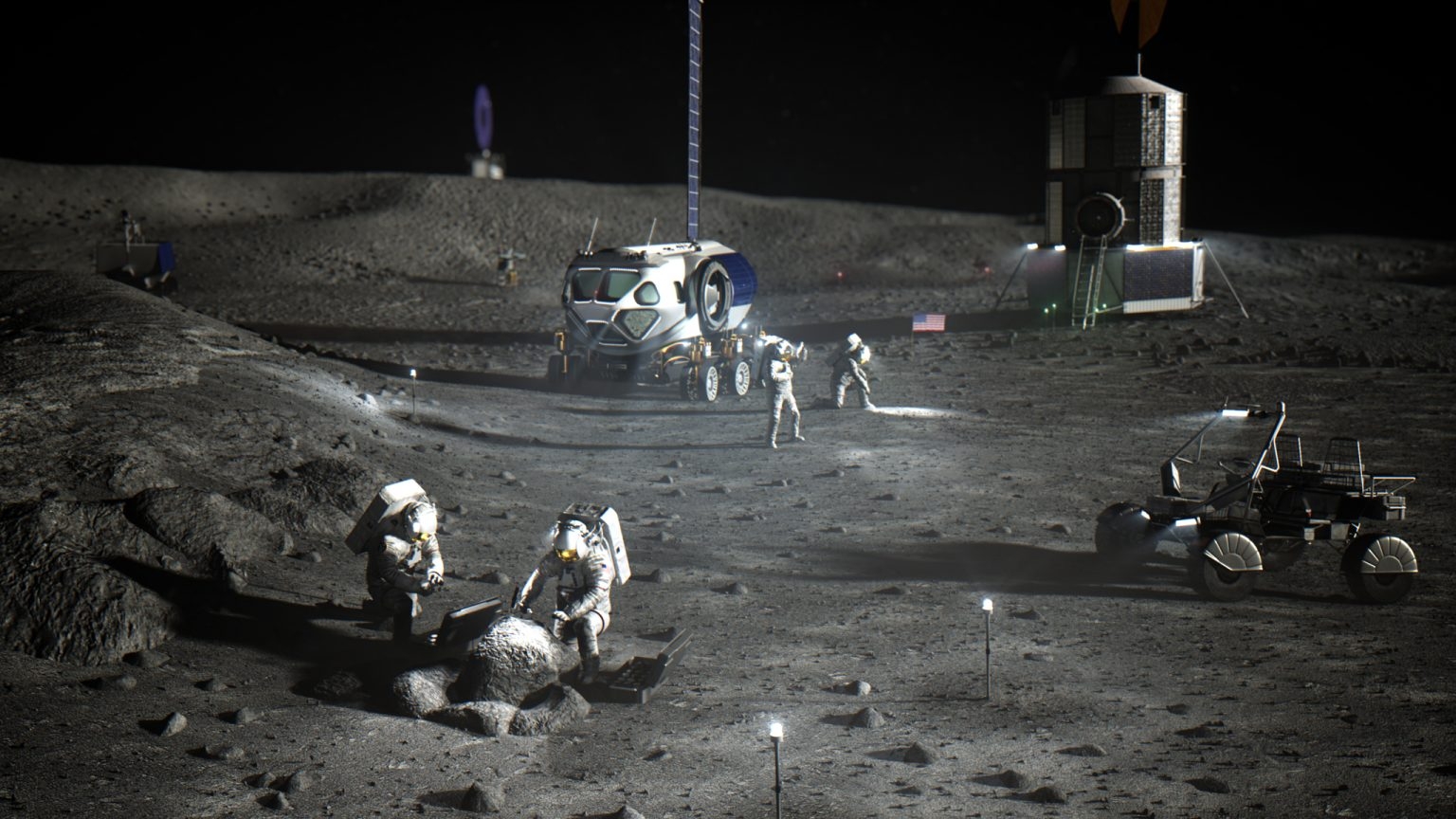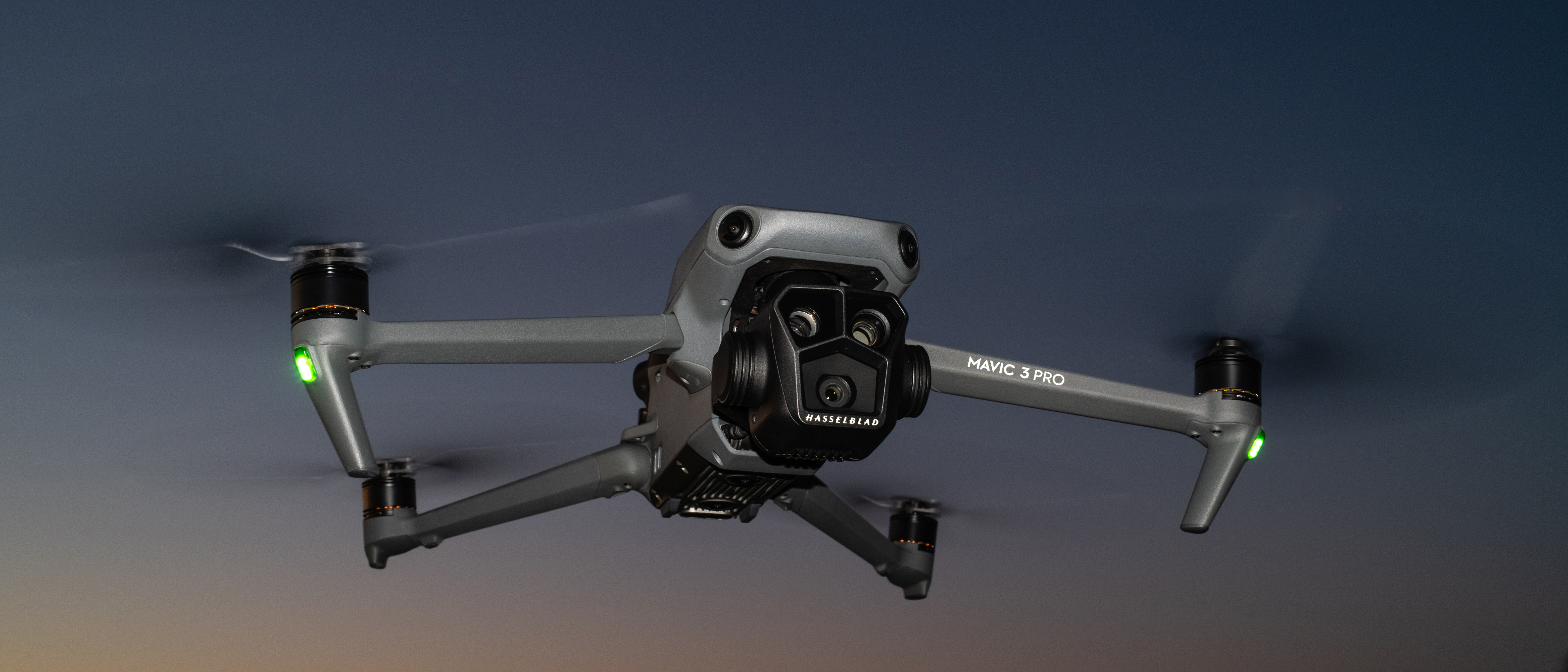Life on the moon: Lockheed Martin shares exploration vision for 2044
"The lunar south pole in the 2040s is a stunning vision of the human frontier in development."

Lockheed Martin has shared its vision for humanity's future in space, as global space agencies aim for the moon and beyond.
Lockheed Martin, a key player in space exploration for decades, recently published a novella white paper called "A Vision for Humanity's Future in Space." The document outlines what the moon's infrastructure may look like in the next few decades, including a bustling Artemis Base Camp at the lunar south pole and a lunar gateway in orbit above the moon to support interplanetary missions to Mars.
"It is imperative that such a vision be sustainable — technically, politically and economically," Lockheed Martin wrote. "According to this guiding principle, the best lunar architecture over the long term is one that is water-based, nuclear-enabled and commercially invested."
The novella, set in the 2040s, kicks off with a day in the life of a "lunar contractor," who has launched to the moon for a six-month mission, during which time lunar resources are harvested, produced stored and distributed. These resources are an essential part of the trade cycle that is the Earth-moon-Mars system, allowing spacecraft to travel from Earth to Mars, with the moon as its central hub.
Related: NASA unveils plan for Artemis 'base camp' on the moon beyond 2024
The envisioned Artemis Base Camp consists of inflatable habitats and workstations at the center of the community, with landing pads on the outskirts. A power grid has been established to store and connect power generated by different sources across the moon, ranging from nuclear fission reactors to solar farms, fuel cells and flow batteries. Given the abundance of water ice at the lunar poles, the moon has become a water-based economy, pioneered by the fictional logistics company Aquarius.
"The inner solar system runs on water. For drinking, radiation shielding, a universal solvent, a source of breathable life support gasses — water's many uses make it the inner solar system's resource of choice," Lockheed Martin wrote. "And then there's the most critical family of commodities: water-based propellants."
Breaking space news, the latest updates on rocket launches, skywatching events and more!
Developing water-based propellants on the moon means that spacecraft can launch empty — and for lower cost — and refuel in lunar orbit using propellants produced from icy regolith. This requires sophisticated fluid management (which Aquarius has nailed down by the 2040s), not only to process the lunar resources but to store the extracted hydrogen and oxygen and to transfer the propellant from one vehicle to another.
The idea of a water-based lunar economy is centered around the benefits of low-cost space travel using reusable vehicles for scalability — "and the most critical part of reusability is refuelability," Lockheed Martin wrote. Reducing non-payload mass and instead relying on orbital gas stations not only lowers the cost of spaceflight but also increases the longevity of spacecraft. Utilizing hydrogen-oxygen propellants made from water, which can be found just about everywhere in the inner solar system, helps the lunar economy become less Earth-dependent.
"The lunar south pole in the 2040s is a stunning vision of the human frontier in development," Lockheed Martin wrote. "The moon is the perfect testing ground and resource hub to support humanity's expansion into the solar system."
By the 2040s, it is expected that the moon's resources can be even more widely shared. The novella describes a "Martian gas station" in orbit above the Red Planet, at which interplanetary transit vehicles arrive from the moon every 26 months with water supplies that can be turned into propellants. This allows Martian landers to refuel between missions to and from the surface of the Red Planet, where a small permanent base is being built, according to Lockheed Martin's vision.
Expanding this infrastructure to Mars relied on hydrogen-fueled nuclear thermal propulsion (NTP) vehicles, whose significant thrust shortens the travel time to Mars, requiring less resources and reducing crew exposure to harmful radiation.
The construction and maintenance of both a lunar and Martian base is largely supported by robotic assistants, overseen by lunar contractors. However, the goal is that advancements in artificial intelligence will one day allow for more automation and remote operation.
Lockheed Martin also envisions a diverse exploration ecosystem, built on international and interagency collaboration. "You're part of an elite cadre up here — every activity that occurs on the moon is due to the combined intelligence, effort and ingenuity of entire nations," the company wrote.
You can download a copy of Lockheed Martin's novella for a full glimpse into what our future in space may look like.
Join our Space Forums to keep talking space on the latest missions, night sky and more! And if you have a news tip, correction or comment, let us know at: community@space.com.

Samantha Mathewson joined Space.com as an intern in the summer of 2016. She received a B.A. in Journalism and Environmental Science at the University of New Haven, in Connecticut. Previously, her work has been published in Nature World News. When not writing or reading about science, Samantha enjoys traveling to new places and taking photos! You can follow her on Twitter @Sam_Ashley13.
-
ZZTOP Reply
LOL, I guess that this means that they gave up on Mars and they will still have to fix the rockets that blow up on takeoff and that cannot get to low Earth orbit without leaking. So 3044 might be more realistic, that is if we are still hereAdmin said:Lockheed Martin has shared its vision for humanity's future in space, as global space agencies aim for the moon and beyond.
Life on the moon: Lockheed Martin shares exploration vision for 2044 : Read more -
ChrisA I agree that in the end exploration will depend more on human-supervised AI then on Elon Musk's vision of a one million-person city on Mars. What would those people do that can't be done by the advanced robots we might have in 50 or 60 years?Reply
Does anyone remember the old 1940s plans to send rockets to the Moon? These ships had large crews with dozens of people because the values that controlled the rockets and the life support system all had to be operated by human hands. Automation has made it so that today we can do unmanned landings even on Mars. The automation will advance over the next 50 to 100 years to the point where the only people we need to send to space are tourists. Tourism will be what drives manned space missions.
In 60 years few people will drive cars on city streets, likewise, there will be no need for human drives in lunar vehicles or pilots in spaceships. -
ZZTOP Reply
Everything automated has to be built and maintained by humans unless AI takes over and terminates us like in the movies.ChrisA said:I agree that in the end exploration will depend more on human-supervised AI then on Elon Musk's vision of a one million-person city on Mars. What would those people do that can't be done by the advanced robots we might have in 50 or 60 years?
Does anyone remember the old 1940s plans to send rockets to the Moon? These ships had large crews with dozens of people because the values that controlled the rockets and the life support system all had to be operated by human hands. Automation has made it so that today we can do unmanned landings even on Mars. The automation will advance over the next 50 to 100 years to the point where the only people we need to send to space are tourists. Tourism will be what drives manned space missions.
In 60 years few people will drive cars on city streets, likewise, there will be no need for human drives in lunar vehicles or pilots in spaceships. -
COLGeek Reply
By that logic, AI would be inducing its own extinction. 🤯ZZTOP said:Everything automated has to be built and maintained by humans unless AI takes over and terminates us like in the movies. -
ZZTOP Reply
In reality AI could blast itself into space, design a supervirus and launch it back to Earth and we vanish in 48 or less hours.COLGeek said:By that logic, AI would be inducing its own extinction. 🤯 -
COLGeek Reply
You are watching too many bad films/shows or reading too many sci-fi novels. We are FAR from such things, if ever. :rolleyes:ZZTOP said:In reality AI could blast itself into space, design a supervirus and launch it back to Earth and we vanish in 48 or less hours. -
ZZTOP Reply
Nope because the Congress has already passed legislation banning AI from nuclear launches. Just like the terminator movies. Google already has a conscious program which means that the DOD has the sameCOLGeek said:You are watching too many bad films/shows or reading too many sci-fi novels. We are FAR from such things, if ever. :rolleyes:
https://www.congress.gov/bill/118th-congress/senate-bill/1394#:~:text=Introduced in Senate (05/01/2023)&text=This bill prohibits the use,of launching a nuclear weapon.
S.1394 - Block Nuclear Launch by Autonomous Artificial Intelligence Act of 2023118th Congress (2023-2024)
Introduced in Senate (05/01/2023)Block Nuclear Launch by Autonomous Artificial Intelligence Act of 2023
This bill prohibits the use of federal funds for an autonomous weapons system that is not subject to meaningful human control to launch a nuclear weapon or to select or engage targets for the purposes of launching a nuclear weapon. With respect to an autonomous weapons system, meaningful human control means human control of the (1) selection and engagement of targets: and (2) time, location, and manner of use. -
COLGeek Reply
Sorry. You are over interpreting this. But that is okay. We are safe, in this regard.ZZTOP said:Nope because the Congress has already passed legislation banning AI from nuclear launches. Just like the terminator movies. Google already has a conscious program which means that the DOD has the same
https://www.congress.gov/bill/118th-congress/senate-bill/1394#:~:text=Introduced in Senate (05/01/2023)&text=This bill prohibits the use,of launching a nuclear weapon.
S.1394 - Block Nuclear Launch by Autonomous Artificial Intelligence Act of 2023118th Congress (2023-2024)
Introduced in Senate (05/01/2023)Block Nuclear Launch by Autonomous Artificial Intelligence Act of 2023
This bill prohibits the use of federal funds for an autonomous weapons system that is not subject to meaningful human control to launch a nuclear weapon or to select or engage targets for the purposes of launching a nuclear weapon. With respect to an autonomous weapons system, meaningful human control means human control of the (1) selection and engagement of targets: and (2) time, location, and manner of use.
Not passed. See status here:
https://www.congress.gov/bill/118th-congress/senate-bill/1394/related-bills -
ZZTOP Reply
Technically the above legislation makes this AI controlled F-16 illegal because F-16's are capable of carrying tactical nuclear weapons as Russia has recently notedCOLGeek said:Sorry. You are over interpreting this. But that is okay. We are safe, in this regard.
NaY5rF7n6VEView: https://www.youtube.com/watch?v=NaY5rF7n6VE -
COLGeek Reply
I think we are done here.ZZTOP said:Technically the above legislation makes this AI controlled F-16 illegal because F-16's are capable of carrying tactical nuclear weapons as Russia has recently noted
NaY5rF7n6VEView: https://www.youtube.com/watch?v=NaY5rF7n6VE

